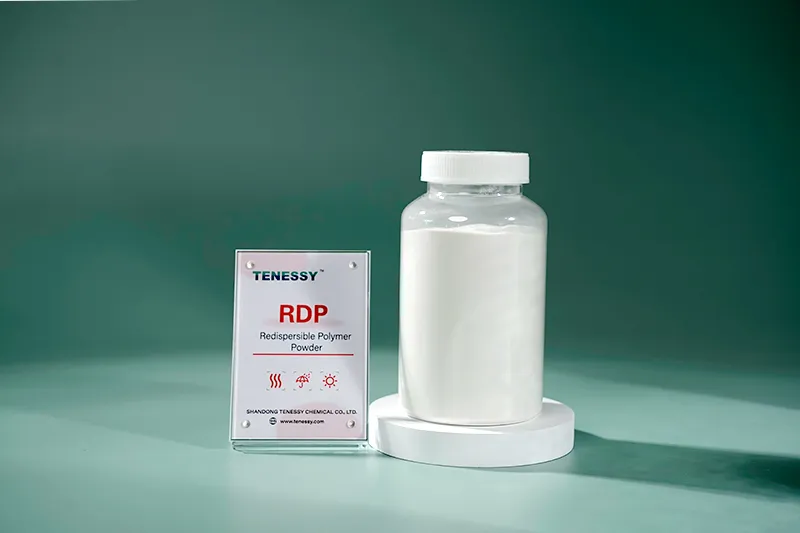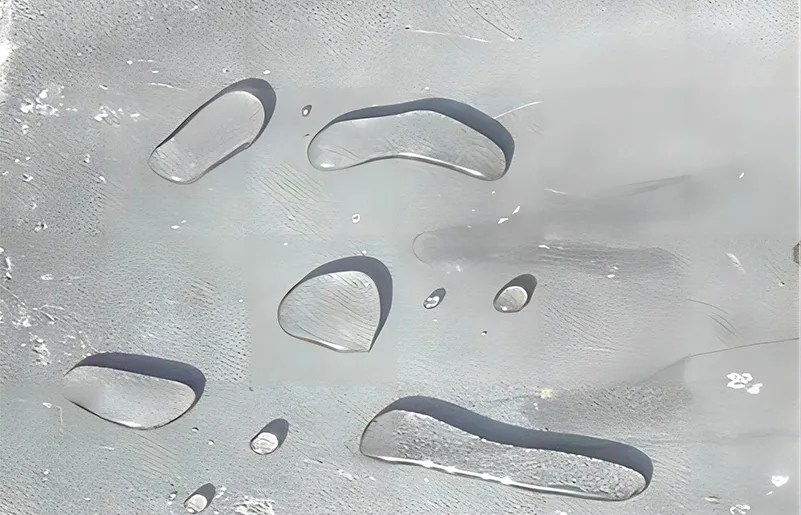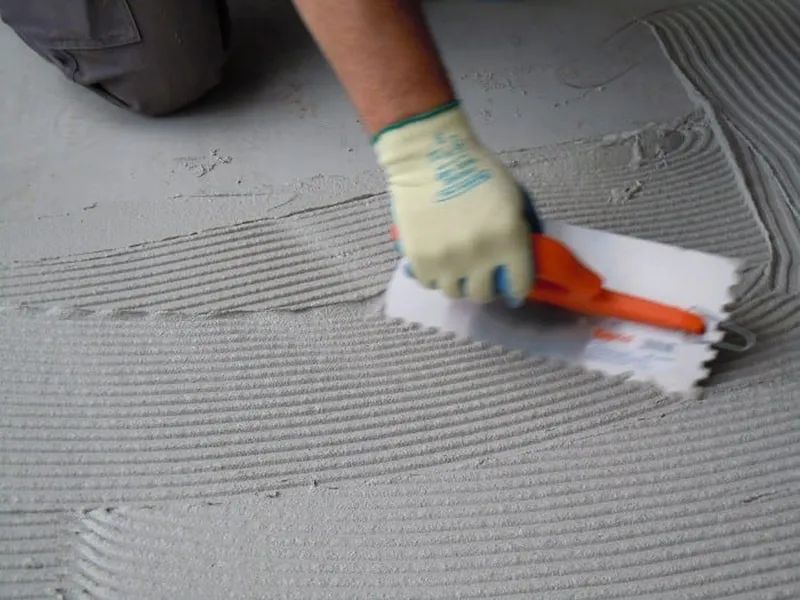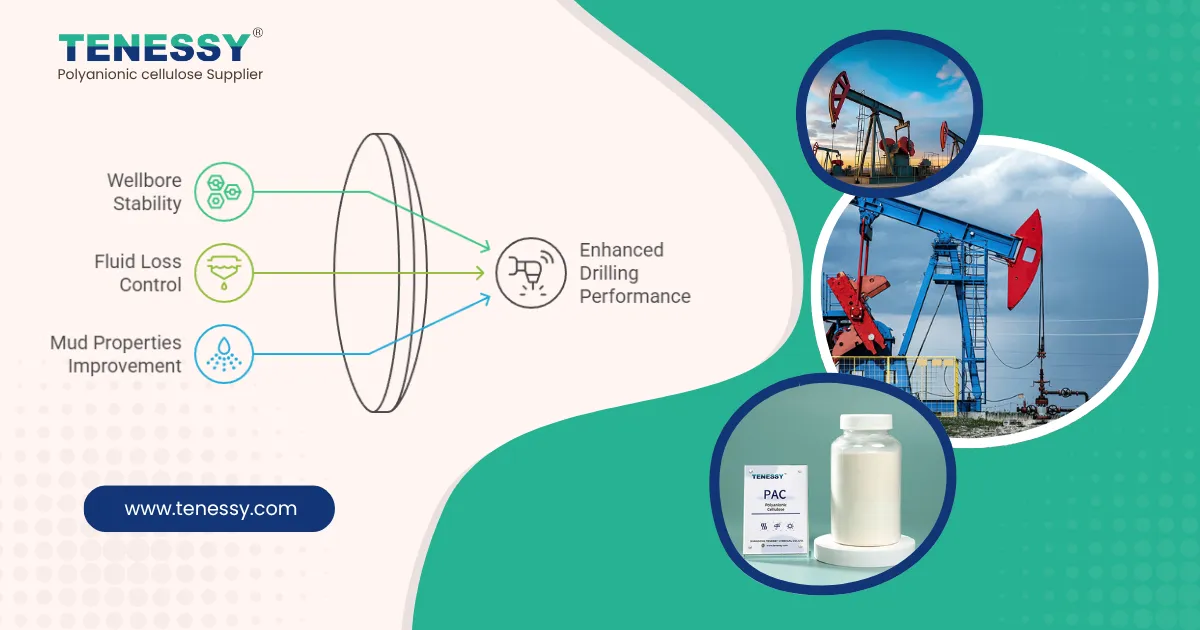
I. What Is PAC in Oilfield Drilling?
The value of PAC for drilling fluids lies in:
Reducing fluid loss into permeable formations
Improving rheological properties of mud
Preventing wellbore collapse
Enhancing cuttings transport efficiency
Whether you’re drilling vertical wells or high-angle deviated sections, PAC supports both cost-effective drilling and formation protection.
II. PAC-LV vs PAC-HV: Key Differences
PAC comes in two grades, PAC-LV (Low Viscosity) and PAC-HV (High Viscosity), which are intended to meet the requirements of various drilling fluid systems.
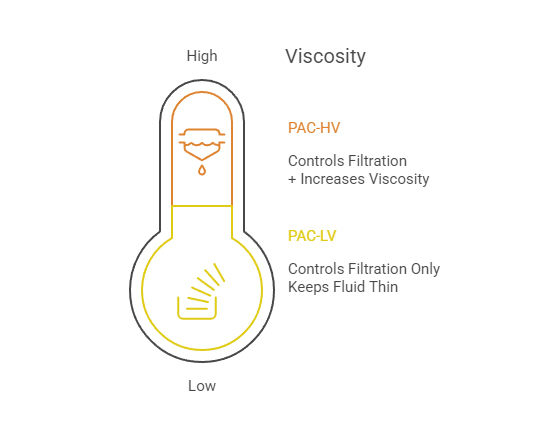
1.PAC-LV (Low Viscosity)
Designed for filtration control with minimal viscosity contribution.
Ideal for high-penetration rate drilling and low-solids systems.
Commonly used in completion fluids or reservoir drilling fluids where minimal formation damage is critical.
2.PAC-HV (High Viscosity)
Provides both fluid loss reduction and viscosity enhancement.
Improves cuttings transport and wellbore cleaning in deep or directional wells.
Suitable for challenging formations requiring strong suspension and stabilization.
Use PAC-LV when you need superior fluid loss control without thickening the mud, and PAC-HV when viscosity and suspension properties are equally important.
III. Application Benefits of PAC for Drilling Fluids
PAC has many advantages in oil drilling:
1. Superior filtrate control
PAC forms a thin, tough, and flexible filter cake on the wellbore wall, effectively sealing the permeable layer and minimizing fluid intrusion.
2. Enhanced rheology management
PAC-HV helps maintain excellent drilling fluid viscosity and gel strength, promoting effective suspension and transportation of cuttings, particularly in high-displacement wells.
3. Heat and salt resistance
PAC-LV and PAC-HV perform well under high salinity and high-temperature conditions, making them suitable for deep wells and offshore environments.
4. Environmentally friendly
Non-toxic and biodegradable, meeting environmental standards for onshore and offshore drilling operations.
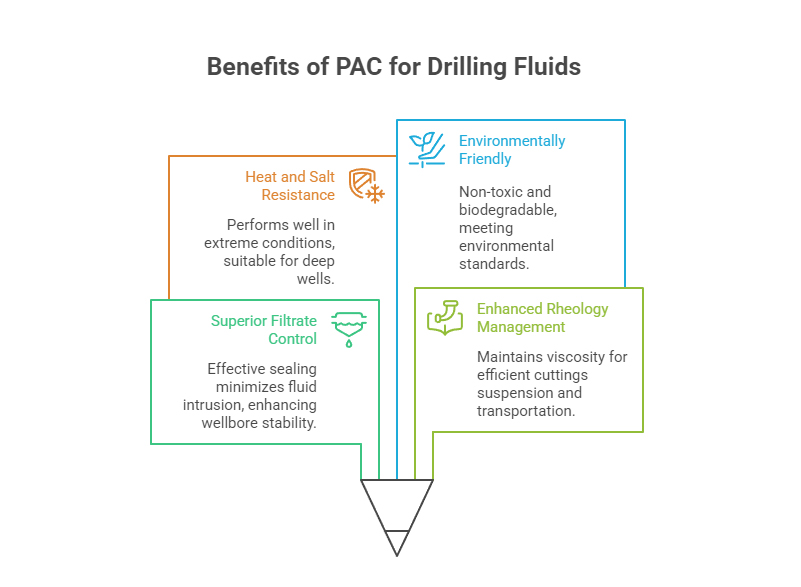
IV. How TENESSYTM PAC Compares to Other Brands?
TENESSYTM PAC for drilling fluids is designed to match or exceed the performance of top international brands widely used in the oilfield industry. Many oil and gas service companies rely on high-cost PAC products from well-known suppliers. However, our customers have found that TENESSY PAC offers comparable quality, greater procurement flexibility, and higher cost-effectiveness without compromising performance.
1. Equivalent quality, Better value
Our PAC-LV and PAC-HV grades meet API 13A specifications for reliable performance in high salinity and high temperature drilling conditions. They are suitable as equivalent replacements for market-leading PAC products, offering the same level of filtration control, thermal stability and system compatibility.
2. High purity, fast dissolvability
We produce PAC with high purity and excellent solubility to ensure rapid hydration without residue.TENESSYTM PAC are well dispersed and seamlessly integrate into freshwater, seawater and brine drilling systems.
3. Customized services for specific field needs
While some global suppliers only offer standard-grade PAC, we provide formulation support and viscosity customization services to suit various geological formations and drilling fluid systems. Whether your project requires a high-viscosity PAC for deep wells or a low-viscosity PAC for reservoir drilling, we can provide tailored solutions and ensure consistent batch quality.
4. Trusted by oilfield customers worldwide
Many of our oilfield customers have successfully switched from expensive international brands to our PAC products, and appreciate not only our equivalent technology, but also our responsive service, reliable logistics, and flexible delivery terms.
TENESSYTM PAC-HV is widely used as a high-performance alternative to Ashland AquaPACTM, providing excellent loss-in-filtration control and rheological support through a more competitive supply solution.

V. Why Choose Our PAC for Oilfield Drilling?
As a leading PAC Supplier, we offer both PAC-LV and PAC-HV grades with:
Consistent quality and performance across batches.
Compatibility with freshwater, seawater, and brine systems.
Strong R&D support for customized formulation.
Global supply capacity with flexible packaging options (25kg bags or jumbo bags).
TENESSYTM PAC is trusted by drilling service companies and oilfield operators worldwide to support safe, stable, and cost-effective drilling operations.
VI. Related Additives for Oilfield Drilling Applications
Although PAC remains the core additive in modern water-based drilling fluid systems, it is often combined with several other cellulose-based and polymer additives to achieve optimal drilling performance.
As a professional supplier of oilfield chemical solutions, we offer a comprehensive product portfolio to meet a wide range of drilling and completion requirements.
1.CMC (sodium carboxymethyl cellulose)
2.HEC (hydroxyethyl cellulose)
In drilling environments, loss control and lubricity are critical, and HEC can be used as a supplementary additive to PAC or CMC.
3.RDP (redispersible polymer powder)
Its strong adhesion, flexibility, and film-forming capabilities enhance wellbore stability and formation isolation, especially in leak zones.
VII.Conclusion
PAC for drilling fluids is a vital additive in modern oilfield operations, offering exceptional control over fluid loss, improving mud rheology, and maintaining wellbore stability in various drilling conditions. Understanding the differences between PAC-LV and PAC-HV allows operators to select the right grade for their specific needs—whether minimizing filtration without thickening or boosting viscosity for better suspension and cleaning.
As a trusted PAC supplier, we offer high-purity, API-compliant products that perform reliably even in high-salinity and high-temperature environments. In addition to PAC, we also supply compatible oilfield additives such as CMC, HEC, and RDP, providing integrated chemical solutions for drilling, completion, and cementing systems.
Partner with us to improve your drilling efficiency, reduce operational risk, and streamline your supply chain with consistent, high-performance oilfield chemicals.



